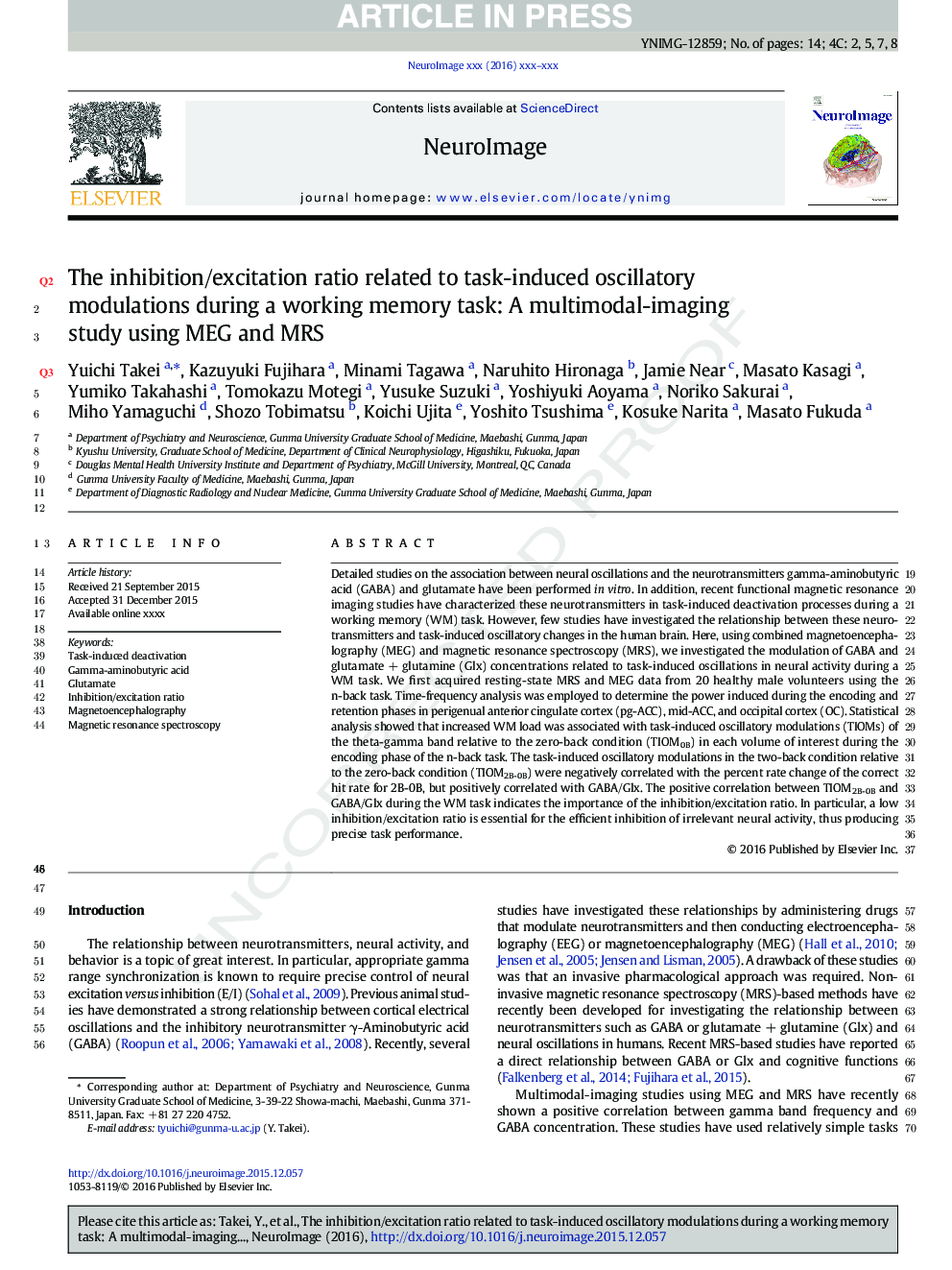| Article ID | Journal | Published Year | Pages | File Type |
|---|---|---|---|---|
| 6024034 | NeuroImage | 2016 | 14 Pages |
Abstract
Detailed studies on the association between neural oscillations and the neurotransmitters gamma-aminobutyric acid (GABA) and glutamate have been performed in vitro. In addition, recent functional magnetic resonance imaging studies have characterized these neurotransmitters in task-induced deactivation processes during a working memory (WM) task. However, few studies have investigated the relationship between these neurotransmitters and task-induced oscillatory changes in the human brain. Here, using combined magnetoencephalography (MEG) and magnetic resonance spectroscopy (MRS), we investigated the modulation of GABA and glutamate + glutamine (Glx) concentrations related to task-induced oscillations in neural activity during a WM task. We first acquired resting-state MRS and MEG data from 20 healthy male volunteers using the n-back task. Time-frequency analysis was employed to determine the power induced during the encoding and retention phases in perigenual anterior cingulate cortex (pg-ACC), mid-ACC, and occipital cortex (OC). Statistical analysis showed that increased WM load was associated with task-induced oscillatory modulations (TIOMs) of the theta-gamma band relative to the zero-back condition (TIOM0B) in each volume of interest during the encoding phase of the n-back task. The task-induced oscillatory modulations in the two-back condition relative to the zero-back condition (TIOM2B-0B) were negatively correlated with the percent rate change of the correct hit rate for 2B-0B, but positively correlated with GABA/Glx. The positive correlation between TIOM2B-0B and GABA/Glx during the WM task indicates the importance of the inhibition/excitation ratio. In particular, a low inhibition/excitation ratio is essential for the efficient inhibition of irrelevant neural activity, thus producing precise task performance.
Keywords
Related Topics
Life Sciences
Neuroscience
Cognitive Neuroscience
Authors
Yuichi Takei, Kazuyuki Fujihara, Minami Tagawa, Naruhito Hironaga, Jamie Near, Masato Kasagi, Yumiko Takahashi, Tomokazu Motegi, Yusuke Suzuki, Yoshiyuki Aoyama, Noriko Sakurai, Miho Yamaguchi, Shozo Tobimatsu, Koichi Ujita, Yoshito Tsushima,
